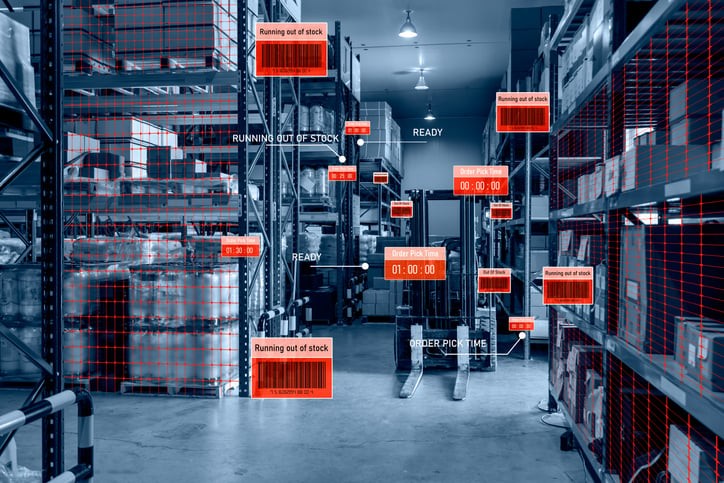Using AI and VR Technology For Operational Success

Supply chain issues are still a challenge for companies in all industries, putting a lot of pressure on national and local markets as well as producers, suppliers, logistics partners … and customers.
In the shipping and transportation industries, virtual solutions like augmented reality (AR) and virtual reality (VR) are becoming more widely used. Additionally, artificial intelligence (AI) technologies are being leveraged to increase the scale of efficiencies for logistics companies and their partners.
Such efficiencies are crucial because so many businesses depend on the movement of goods along the end-to-end supply chain. These include manufacturing facilities, suppliers, warehouses, transportation carriers, distribution centers and retailers, as well as the final consumer or business user.
Issues from Inventory Management
The coronavirus pandemic’s effects on each of these touch points are still being felt today. Among the impacts:
- Poor or limited planning capability that leads to incorrect supply and demand as well as issues managing operational costs
- Inaccurate inventory demands
- Problematic infrastructure bottlenecks
- Unsuccessful B2B software system integrations
- An overall inability for all participants to respond to unforeseen risks or other changes can all be hazards in the supply chain.
Successful supply chain and logistics companies are using technology, data and AI tools to improve in key areas. Resources for algorithmic data are assisting in identifying the potential effects of supply disruptions, demand changes or deviations from the original plan.
AI-driven data analytics is also predicting customer demand, resulting in more effective warehouse management. Because these should-cost models are dynamic, fully automated and responsive to market changes in real time, they are assisting in containing costs. Additionally, order plans and warehouse planning strategies are being developed using AI-powered natural language processors, such as ChatGPT, for maximum procedural efficiency.
In addition to these algorithms, AR/VR tools help create efficiencies and keep costs down through better operational measures. Companies are using AR/VR headsets to more accurately track inventory and shipments. Such devices also count the number of working hours and suggest break times, helping to keep workers more alert.
Fulfillments are more accurate, with AR/VR as the headgear can help warehouse personnel keep track of orders and manage the shipping process more efficiently. What’s more, as logistics companies tap into the power of the metaverse, they will rely on AR/VR for successful implementations embedded and integrated with real-world use.
How Technologies Work Together
When leveraging AR/VR, logistics providers must understand how the technology functions. It enables (1) real-time 3-D visualization and CAD for operations, (2) faster training cycles and (3) higher levels of work.
In fact, many companies report minimized errors using AR/VR through instructions overlay, remote assistance, and better planning and visualization. This has resulted in a more than 40 percent increase in productivity in some instances. AR/VR technologies provide significant time savings through optimized decision process, which positively impacts the entire OODA (observe, orient, decide, act) loop.
One caveat for facility managers: Automation technologies are not equal. It is important to pay close attention to the technology infrastructure. Choosing a cloud-based platform enables projects that can scale when needed.
The use of AI and AR/VR technologies requires the right speed and data for accuracy. Even though technologies like AR/VR have been in use for several years, many companies have deployed virtual solutions that are built upon an on-premises environment, where all the technology data is stored locally. Such on-site AR/VR infrastructures limit the speed and scalability needed for today’s virtual designs. Additionally, they limit the ability to conduct knowledge sharing between supply chain organizations that can be critical when managing a flow of goods at each touch point.
To overcome these limitations, many logistics companies are leveraging cloud-based (or remote server-based) AR/VR platforms powered by distributed cloud architecture and 3-D vision-based AI. These cloud platforms provide the desired performance and scalability to drive innovation in the industry at speed and scale.
As more logistics companies implement the use of AI technologies like predictive modeling and natural language processors like ChatGPT, they will also begin to combine with the powers of AR/VR virtualization to enable the most efficient supply chain possible.


